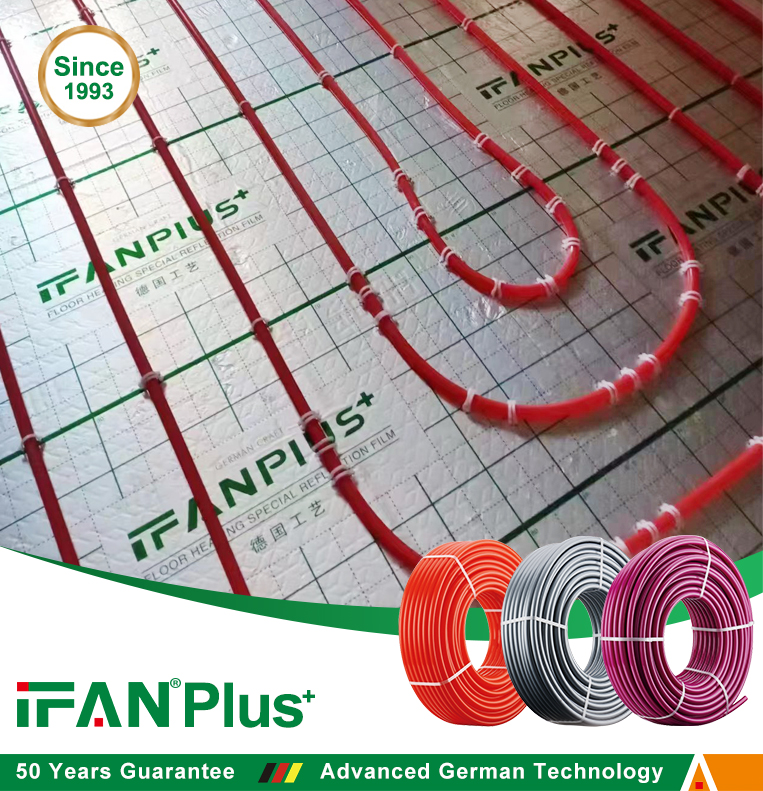1. Introduction to Radiant Floor Heating
Radiant floor heating systems are increasingly popular for providing efficient and comfortable heating in residential and commercial spaces. This method involves embedding heating elements, such as PERT (Polyethylene of Raised Temperature) pipes, in the floor structure to radiate heat evenly across the surface. Understanding the role of PERT pipes in these systems is essential for appreciating their benefits and functionality.
2. What are PERT Pipes?
PERT pipes are made from a type of polyethylene that is designed to withstand higher temperatures than standard polyethylene. They are characterized by their:
- Flexibility: Allowing for easy installation in various configurations.
- Durability: Resistant to corrosion, scaling, and chemical degradation.
- Thermal Performance: Excellent thermal conductivity, which is crucial for efficient heat transfer in radiant heating systems.
3. Advantages of Using PERT Pipes in Radiant Heating
- Ease of Installation: PERT pipes are lightweight and flexible, making them easy to handle and install in various layouts.
- Cost-Effectiveness: Compared to traditional materials, PERT pipes often result in lower installation and labor costs due to their ease of use.
- Enhanced Energy Efficiency: Their ability to distribute heat evenly leads to lower energy consumption and reduced heating costs over time.
4. How PERT Pipes Function in Radiant Heating Systems
PERT pipes are typically laid out in loops beneath the floor surface. As hot water flows through these pipes, heat is transferred to the floor, which then radiates warmth into the living space. This method provides:
- Uniform Heating: Eliminating cold spots and creating a consistent temperature throughout the room.
- Improved Comfort: Radiant heating is often perceived as more comfortable than traditional forced-air systems.
5. Compatibility with Various Flooring Materials
One of the benefits of PERT pipes is their compatibility with a wide range of flooring materials, including:
- Tile: Excellent heat conductivity, making it a popular choice.
- Laminate and Wood: Requires careful installation to avoid warping or damage.
- Carpet: Can be used with proper underlay to ensure effective heat transfer.
6. System Design Considerations
When designing a radiant floor heating system with PERT pipes, several factors should be considered:
- Layout: The configuration of the pipe loops (e.g., spiral, serpentine) affects heat distribution and efficiency.
- Pipe Spacing: Proper spacing is crucial for effective heating; typical spacing ranges from 12 to 18 inches depending on heating needs.
- Flow Rates and Temperature Control: Balancing the flow rates and maintaining appropriate water temperatures is essential for optimal performance.
7. Insulation Requirements
Proper insulation beneath the PERT pipes is vital to prevent heat loss into the subfloor. This enhances system efficiency and ensures that most of the heat radiates upward. Common insulation materials include:
- Foam Board Insulation: Provides a solid thermal barrier and is easy to install.
- Reflective Foil Insulation: Reflects heat back into the living space, improving overall efficiency.
8. Maintenance and Longevity of PERT Pipes
Maintaining PERT pipes in radiant heating systems involves:
- Regular Inspections: Checking for leaks or damage periodically.
- Flushing the System: To remove any debris or buildup that may hinder performance.
- Longevity: PERT pipes have a long lifespan, often exceeding 50 years when installed correctly and maintained.
9. Cost-Benefit Analysis
When considering the installation of PERT pipes in radiant floor heating systems, a cost-benefit analysis is crucial:
- Initial Investment vs. Long-Term Savings: While the upfront cost may be higher than traditional systems, the energy savings and increased comfort can offset these costs over time.
- Property Value Enhancement: Well-designed radiant heating systems can increase the resale value of homes.
10. Conclusion
In conclusion, PERT pipes play a pivotal role in the effectiveness of radiant floor heating systems. Their flexibility, durability, and energy efficiency make them an ideal choice for modern heating solutions. By understanding the benefits and considerations of PERT pipes, homeowners and builders can make informed decisions to enhance comfort and efficiency in their spaces.
View more:https://www.ifanfittings.com/


